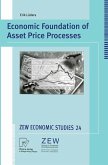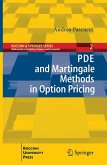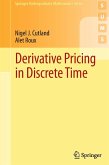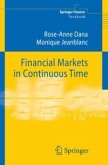The volume offers a mathematical introduction to non-life insurance and, at the same time, to a multitude of applied stochastic processes. It includes detailed discussions of the fundamental models regarding claim sizes, claim arrivals, the total claim amount, and their probabilistic properties. Throughout the volume the language of stochastic processes is used for describing the dynamics of an insurance portfolio in claim size, space and time. Special emphasis is given to the phenomena which are caused by large claims in these models. The reader learns how the underlying probabilistic structures allow determining premiums in a portfolio or in an individual policy.
The second edition contains various new chapters that illustrate the use of point process techniques in non-life insurance mathematics. Poisson processes play a central role. Detailed discussions show how Poisson processes can be used to describe complex aspects in an insurance business such as delays in reporting, the settlement of claims and claims reserving. Also the chain ladder method is explained in detail.
More than 150 figures and tables illustrate and visualize the theory. Every section ends with numerous exercises. An extensive bibliography, annotated with various comments sections with references to more advanced relevant literature, makes the volume broadly and easily accessible.
The second edition contains various new chapters that illustrate the use of point process techniques in non-life insurance mathematics. Poisson processes play a central role. Detailed discussions show how Poisson processes can be used to describe complex aspects in an insurance business such as delays in reporting, the settlement of claims and claims reserving. Also the chain ladder method is explained in detail.
More than 150 figures and tables illustrate and visualize the theory. Every section ends with numerous exercises. An extensive bibliography, annotated with various comments sections with references to more advanced relevant literature, makes the volume broadly and easily accessible.
Dieser Download kann aus rechtlichen Gründen nur mit Rechnungsadresse in A, B, BG, CY, CZ, D, DK, EW, E, FIN, F, GR, HR, H, IRL, I, LT, L, LR, M, NL, PL, P, R, S, SLO, SK ausgeliefert werden.
From the reviews:
"The book offers a mathematical introduction to non-life insurance and, at the same time, to a multitude of applied stochastic processes. It gives detailed discussions of the fundamental models for claim sizes, claim arrivals, the total claim amount, and their probabilistic properties. ... The reader gets to know how the underlying probabilistic structures allow one to determine premiums in a portfolio or in an individual policy. Special emphasis is given to the phenomena which are caused by large claims in these models." (Zentralblatt für Didaktik der Mathematik, November, 2004)
"The author's aim to bring some of the standard stochastic models of non-life insurance mathematics to the attention of a wide audience ... can definitely be reached by this textbook. It is well-written ... . Many figures and tables in this book help in illustrating and visualizing the developed theory. Moreover, every section ends with an extensive collection of exercises... and should help the reader in accessing the theory." (Josef Steinebach, Zentralblatt MATH, Vol. 1033 (8), 2004)
From the reviews of the second edition:
"The brief summary of the book's contents and purpose ... describes it as a mathematical introduction to non-life insurance, and it introduces the appropriate range of stochastic processes for this purpose. ... The book is based upon lectures given to 3rd year mathematics students ... . this book is suited to study at the advanced undergraduate level at the earliest. Overall, this is a fascinating book on a subject ... ." (P. N. Ruane, The Mathematical Association of America, August, 2009)
"The book contains both basic and more advanced material on non-life insurance mathematics. ... aim at the undergraduate actuarical students. ... can serve as an independent course on stochastic models of non-life insurance mathematics at the graduate level." (Alexandra Rodkina, Zentralblatt MATH, Vol. 1166, 2009)
"The book offers a mathematical introduction to non-life insurance and, at the same time, to a multitude of applied stochastic processes. It gives detailed discussions of the fundamental models for claim sizes, claim arrivals, the total claim amount, and their probabilistic properties. ... The reader gets to know how the underlying probabilistic structures allow one to determine premiums in a portfolio or in an individual policy. Special emphasis is given to the phenomena which are caused by large claims in these models." (Zentralblatt für Didaktik der Mathematik, November, 2004)
"The author's aim to bring some of the standard stochastic models of non-life insurance mathematics to the attention of a wide audience ... can definitely be reached by this textbook. It is well-written ... . Many figures and tables in this book help in illustrating and visualizing the developed theory. Moreover, every section ends with an extensive collection of exercises... and should help the reader in accessing the theory." (Josef Steinebach, Zentralblatt MATH, Vol. 1033 (8), 2004)
From the reviews of the second edition:
"The brief summary of the book's contents and purpose ... describes it as a mathematical introduction to non-life insurance, and it introduces the appropriate range of stochastic processes for this purpose. ... The book is based upon lectures given to 3rd year mathematics students ... . this book is suited to study at the advanced undergraduate level at the earliest. Overall, this is a fascinating book on a subject ... ." (P. N. Ruane, The Mathematical Association of America, August, 2009)
"The book contains both basic and more advanced material on non-life insurance mathematics. ... aim at the undergraduate actuarical students. ... can serve as an independent course on stochastic models of non-life insurance mathematics at the graduate level." (Alexandra Rodkina, Zentralblatt MATH, Vol. 1166, 2009)









